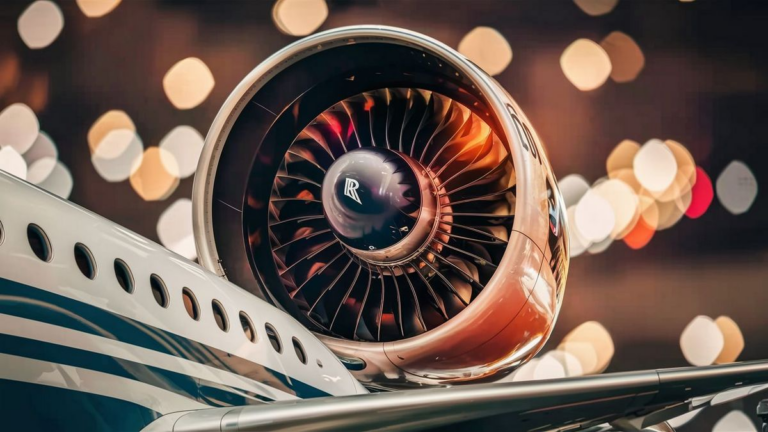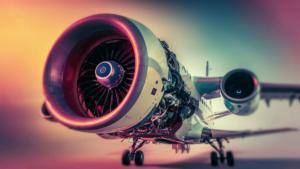When it comes to the Boeing 787 Dreamliner, one of the most significant components that aviation enthusiasts and passengers alike are curious about is its engine. The Boeing 787 is a revolutionary aircraft that has redefined long-haul travel with its advanced technology, fuel efficiency, and passenger comfort. Understanding the engines powering this marvel of modern aviation is crucial to comprehending its capabilities and performance.
The Rolls-Royce Trent 1000 and General Electric GEnx Engines
The Boeing 787 Dreamliner is powered by two main types of engines: the Rolls-Royce Trent 1000 and the General Electric GEnx. These engines represent cutting-edge technology in the realm of aviation propulsion, offering exceptional efficiency, reliability, and environmental performance.
Rolls-Royce Trent 1000 Engine
The Rolls-Royce Trent 1000 engine is a turbofan engine developed specifically for the Boeing 787 Dreamliner. It is part of Rolls-Royce’s renowned Trent engine family, known for its efficiency and reliability. The Trent 1000 incorporates advanced technologies such as a three-shaft design, swept fan blades, and a composite fan casing, which contribute to its high performance and fuel efficiency.
General Electric GEnx Engine
The General Electric GEnx engine is another option available for the Boeing 787 Dreamliner. It is a high-bypass turbofan engine developed by General Electric as part of its next-generation engine program. The GEnx engine features innovative technologies such as lightweight composite materials, advanced fan design, and a highly efficient core, delivering superior fuel efficiency and reduced emissions.
Performance and Benefits
Both the Rolls-Royce Trent 1000 and General Electric GEnx engines offer exceptional performance and numerous benefits for airlines operating the Boeing 787 Dreamliner. These include:
- Increased fuel efficiency, resulting in lower operating costs and reduced environmental impact.
- Enhanced reliability, leading to fewer maintenance issues and improved aircraft availability.
- Reduced noise levels, providing a quieter and more comfortable passenger experience.
- Extended range capabilities, allowing airlines to operate long-haul routes with greater efficiency.
- Advanced engine health monitoring systems, enabling proactive maintenance and optimized performance.
In conclusion, the Boeing 787 Dreamliner is powered by either the Rolls-Royce Trent 1000 or General Electric GEnx engines, both of which represent the pinnacle of modern aviation propulsion technology. These engines offer exceptional performance, fuel efficiency, and environmental sustainability, making the Dreamliner one of the most advanced and efficient commercial aircraft in the skies today.
Comparison of Engine Specifications
While both the Rolls-Royce Trent 1000 and General Electric GEnx engines power the Boeing 787 Dreamliner, there are some differences in their specifications. Here’s a comparison:
| Engine | Maximum Thrust (per engine) | Weight | Fuel Efficiency |
|---|---|---|---|
| Rolls-Royce Trent 1000 | 64,000-78,000 lbf | Approx. 6,000-7,000 kg | Highly fuel-efficient with advanced technologies |
| General Electric GEnx | 53,000-76,000 lbf | Approx. 5,000-6,000 kg | Offers superior fuel efficiency with lightweight materials and advanced design |
Environmental Impact
Another crucial aspect to consider is the environmental impact of these engines. While both the Rolls-Royce Trent 1000 and General Electric GEnx engines are designed with a focus on reducing emissions, they employ different strategies to achieve this goal. For instance, the Trent 1000 incorporates advanced materials and design features to enhance fuel efficiency and reduce carbon emissions, while the GEnx engine utilizes innovative technologies to minimize both fuel consumption and emissions, contributing to lower overall environmental impact.
Manufacturing Processes
The manufacturing processes of these engines also play a significant role in their performance and environmental impact. Rolls-Royce and General Electric employ cutting-edge manufacturing techniques and materials to ensure the highest quality and efficiency in their engine production. This includes the use of advanced composites, precision engineering, and stringent quality control measures to minimize waste and energy consumption during manufacturing.
Frequently Asked Questions
- Which engine is more popular among airlines? Airlines have varying preferences based on factors such as fuel efficiency, maintenance costs, and supplier relationships. Both engines have a significant market share in powering the Boeing 787 fleet.
- Are there any other engine options for the Boeing 787? While the Rolls-Royce Trent 1000 and General Electric GEnx engines are the primary options, Boeing has also explored the possibility of offering alternative engine choices in the future.
- How do these engines compare to previous-generation models? Both the Trent 1000 and GEnx engines represent significant advancements over previous-generation models in terms of fuel efficiency, performance, and environmental impact. They utilize state-of-the-art technologies to deliver superior results.
See also:






